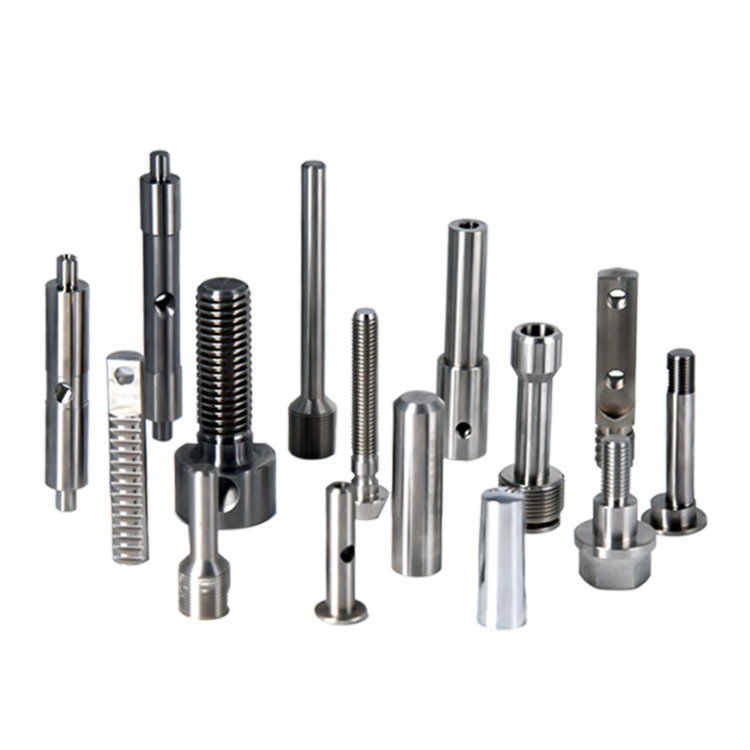Mechanical parts are used in a wide range of industries from agriculture to automotive, and these parts are manufactured through machining operations. In order to obtain the required complex geometry of the components, the manufacturing process is usually done with machining methods such as CNC machining and drilling. In addition, in order to enhance the surface hardness to meet the needs of the application area, the mechanical parts are subjected to surface coating and hardening methods. Steel components are processed in different ways and these are: cold working, machining operations, heat treatment and coating.
Cold working usually refers to the strengthening mechanism of the steel, where the number of dislocations increases and these dislocations are interlocked. These locking mechanisms prevent dislocations from moving, which means that the steel is strengthened, and bending is a common example of cold working. The bending machine is used to bend the raw steel into the desired shape, during which the steel is plastically deformed and strengthened. Bending can be divided into section bending and plate bending. Section bending involves forming a steel plate or section in a vertical roll. The billets are moved through the rolls and on each roll the slab is progressively bent. The only difference between section bending and sheet bending is the direction of the rolls. In sheet bending, the horizontal placement of the rolls affects the maximum curvature of the bend due to the shape of the raw material (steel sheet).
Another common cold working method is extrusion, in which the steel is placed between a die and a punch, which are in the desired shape. Thus, an external force is applied to the punch to press the steel between the punch and the die. Finally, the steel is formed through the die and punch. Drawing is another method of cold working steel. In the drawing method, usually, the tube steel is pulled out of the orifice to make the tube thinner. The cold drawing process is very suitable for applications aimed at manufacturing fine steel wires.
The machining operations for steel can be divided into turning, drilling and milling. In turning, the work steel is placed on a rotating bar. Lathes are usually used for turning operations. The work steel is rotated while the tool moves over the steel in different rotations. All movements, angles and rotations of the tool can be arranged by computer numerical control (CNC). Different shapes of tools can be used for different applications, for example; roughing, finishing and face machining.
Another machining application is drilling, which holds a spherical hole in a steel body. Usually, the drill bit is held against the rotating steel body and creates a cavity in the body. The most important point of the drilling operation is the formation of excessive burrs and chip nubs, these excessive burrs and chip nub edges can interrupt the forming process. The final machining operation is milling, where the milling machine consists of rotating ends with multiple points that remove material from the steel body.
One of the most important steps in the steel manufacturing method is the heat treatment of the steel. Heat treatment is used for various purposes, but the main objective is to obtain optimum properties. Heat treatment involves the heating, homogenization and cooling of the steel. The heat treatment mechanism produces finer grains and ensures better mechanical properties. In addition, during the cold working of steel, induced internal stresses increase and these internal stresses prevent further forming of the billet or plate. To reduce the internal stresses, annealing is performed, during which the steel softens and the forming process becomes easier. For many applications and many types of steel, several heat treatment procedures can be performed.
Another manufacturing method is welding, which is the most common method of joining steels. In principle, the metallurgy of the welded zone is extremely basic, and the microstructure of the filler metal is similar to that of cast metal. The adjacent zones are called heat affected zones (HAZ) and the microstructure of these zones is similar to that of heat treated zones. A variety of energy sources can be used for welding operations, but the most commonly used are gas flame, electric arc and laser sources.
The coating process is very important for steel treatment, and enhanced surface friction can be achieved by surface coating. In addition, surface coating enhances the surface quality by removing burrs or any additional material. Sandblasting, galvanizing and powder coating are the most common coating methods. In sandblasting, the smoothness of the part surface is ensured by small rigid particles hitting the surface and removing unwanted particles. Removing excess material from the surface also enhances the fatigue and corrosion performance of the steel, and a smooth surface is necessary for a part.
Galvanizing is the most common method of corrosion protection, in which the steel is coated with a thin layer of zinc to protect the steel from corrosive environments. The last method is the powder coating method, in which very fine powder particles are blown into the surface and cured. The powder coating method uses an electrostatic process in which fine particles are attracted to the steel surface and cover the steel surface.

